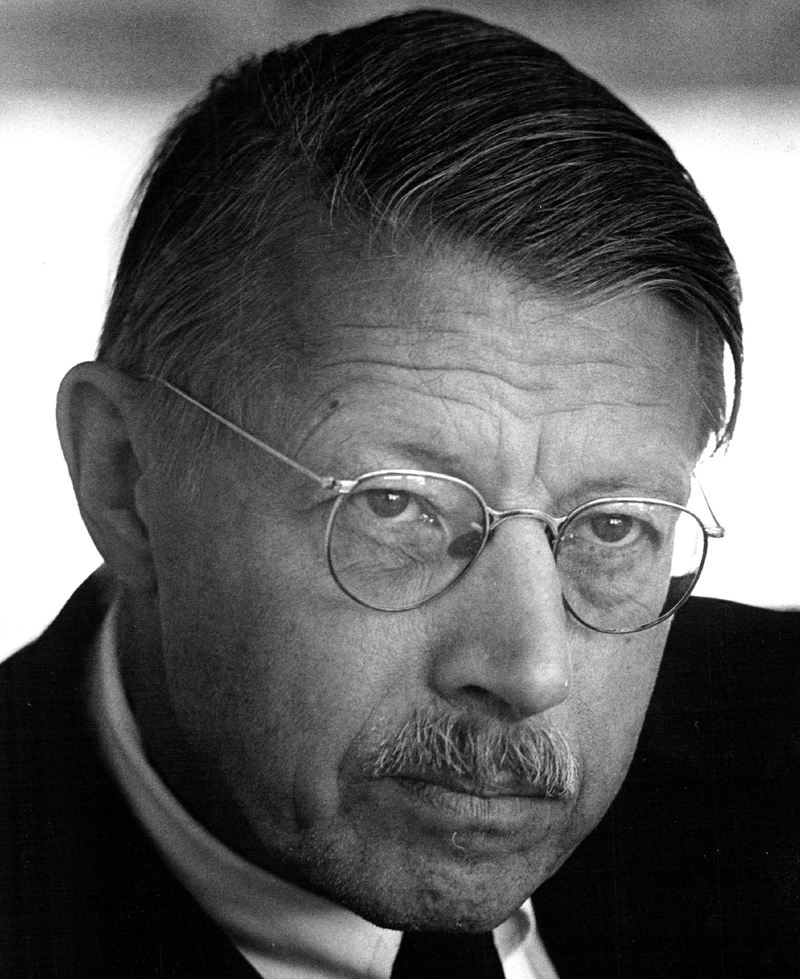 NYPR Archives & Preservation
NYPR Archives & Preservation
Harrison Salisbury, The Reporter as Witness to the Truth

In this March 1, 1988 talk, Harrison Salisbury, a giant of 20th century journalism, explains that a newsperson’s obligation is to report an event “to convey the essence of what happened and why it’s significant.” “This may sound simple,” says Salisbury, a former World War II correspondent for United Press International who then went on to have a distinguished career with The New York Times, “but it is an extremely hard task.”
Salisbury says the parable of “Rashomon," the classic Japanese film of people who recount multiple conflicting versions of a murder they think they have witnessed, parallels the travails that a journalist encounters on a routine basis. As an example, he describes his first reporting assignment in his home state of Minnesota, covering what he initially thought was a simple automobile accident but which turned out to have as many versions as there were witnesses. Later, his editors killed a story he wrote in the early 1930’s about the unemployed in the Twin Cities because local politicians and business leaders insisted that the Depression hadn’t come to their towns. “People see what they want to see.” The listener can almost hear Salisbury’s shoulders shrug. “It’s a living phenomenon that can’t be stopped.”
His most profound encounter with multiple versions of the truth came during his coverage of the United States air attacks on North Vietnam. Salisbury -- reporting from Hanoi during the Christmas of 1966 -- described bombs that leveled dwellings and killed civilians. His account did not coincide with the story that was being touted by President Lyndon Johnson and the Pentagon; they insisted that the bombing was “surgical," only hitting steel and concrete targets of military value. Salisbury, who huddled with North Vietnamese civilians in bomb shelters, knew otherwise, and filed accounts that made trouble for the powerful, who then launched ad hominem attacks against him. But it was later revealed that the information he presented regarding the scope of the bombing damage turned out to have been independently and immediately verified as accurate by the Central Intelligence Agency.
Winner of multiple George Polk Awards, Salisbury insisted that a journalist’s true job is to bear witness. This often requires being confrontational and getting “brickbats rather than bouquets” from those who come under the journalist's lens. He ironically describes reporters who perceived themselves as having friendly relationships with Presidents Franklin Roosevelt, John Kennedy and Ronald Reagan. Salisbury says these leaders were all master manipulators capable of swaying journalists to write favorably of them. Salisbury confessed that he was not immune from Presidential blandishments. Thus, he actually found himself more comfortable covering Presidents Harry Truman and Richard Nixon: neither made any bones about their dislike of the press, which made it easier for the journalist to keep a professional distance.
“To be uppity, to be contradictory,” Salisbury says, “is the essence of the American system” of press freedom. Salisbury reached such a conclusion during the years 1949 through 1954, when he reported from the Soviet Union as Moscow Bureau Chief for The Times. The Soviet government press conferences were attended by dozens of Russian “journalists” who asked no questions and took no notes as Communist officials delivered policy statements and offered statistics. The Russian reporters didn’t need to gather facts: the stories had already been prepared and delivered to their offices in officially approved manuscripts.
Salisbury, who later won the Pulitzer Prize for his coverage of the Soviet Union, said all dispatches from the American press during the late Stalin and early Khrushchev years were subjected to relentless censorship. He tells of using subtle techniques with mixed results to get information past the censors.
Journalists in this country have often been challenged for making Americans uncomfortable, too. When Salisbury was seen taking notes by Barry Goldwater supporters at a campaign rally, they demanded that he stop writing what the candidate was saying. “It was as if I would do damage by revealing what he said.” He notes that such an attitude is widely held in this nation. But Salisbury maintains that for America to continue as a healthy society, it’s important that the media be willing to accept criticism by those it covers. “The turbulent mix of ideas brought forth by the press is our strength.”
Salisbury died at the age of 86 in 1993. In addition to his newspaper achievements, which included founding The New York Times Op-Ed page in 1973, he wrote 29 books on world events including the Nazi siege of Leningrad, Mao Zedong's long march to revolutionary victory in China, the Vietnam War, and the protest at Tiananmen Square.
___________________________________
Note: Harrison Salisbury’s 46-minute talk is followed by short interviews with American journalists Edwin Diamond of New York Magazine and Richard C. Hottelet of CBS News. In this 12-minute segment, the two journalists discuss their own encounters with the “Rashomon” effect.
This program originally aired on WNYC on June 13, 1993.